Having a well-stocked hospital can greatly impact patient treatment during times of need. Here are some reasons and...
Pill Crushers, Electric Pill Grinders and Medication Tablet Smashers
There are multiple reasons why a tablet crusher or tablet-cutting device may be used for daily medication consumption. Large tablets can be difficult to swallow. Pill crushers can be used for non-compliant patients to mix daily medications into foods or beverages. Other patients may be unable to swallow pills at all.
What are Pill Crushers?
Pill crushers take tablets and mash them into powder. The powder form of the drug is easier to consu
-
Most Popular
-
Most Popular
Tablet Smashing Device Challenges
Several medical studies of pill-crushing devices have found that there can be a significant loss of medication between the crushing stage to a patient’s consumption stage with certain devices. One medical study noted the importance of rinsing the crushing device twice, then requiring a patient's direct consumption of the crushed medication (along with the rinse) to receive as much of the prescribed medication as possible.3
Additionally, some studies have found that there are some medications not suitable for crushing. For instance, extended-release or slow-release medications, skin or membrane irritants, as well as foul-tasting pills are not good candidates for pill crushing. A list of these medications that may be compromised and that should not be crushed is provided by the Institute for Safe Medication Practices. Follow the link provided for a full list of oral dose medications that shouldn’t be crushed.4
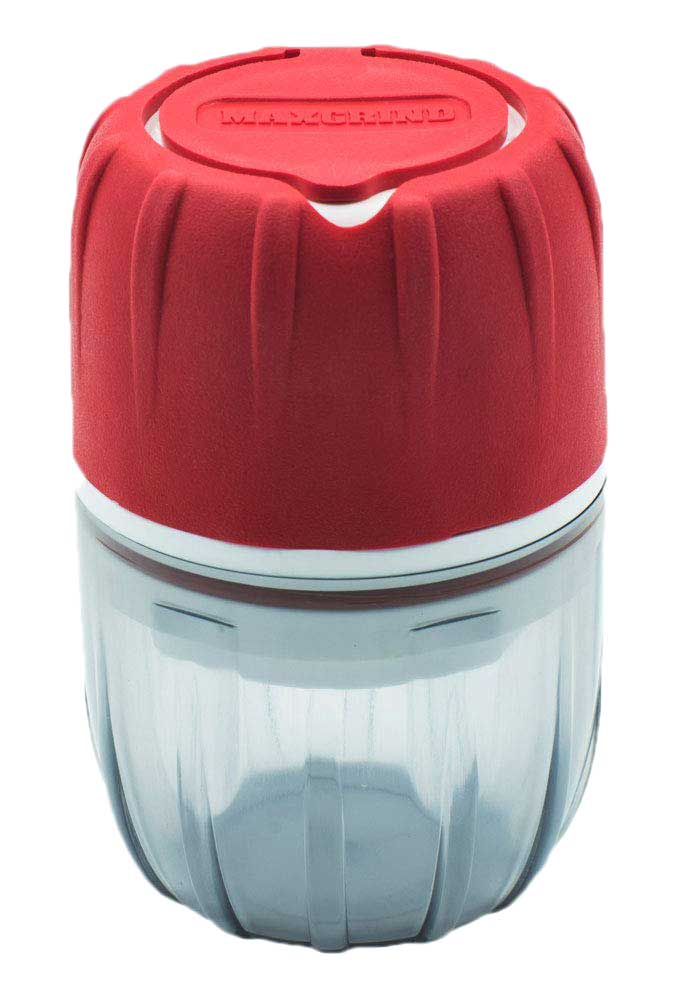
Advantages of Tablet Crushing
There are multiple advantages to using tablet crushing devices for medication use. These devices:
- Aid patients who are unable to swallow large tablets
- Aid patients who refuse to take tablets
- Make pill smashing fast and easy when the right device is used
- Some devices feature disposable cups and pouches to reduce dosage loss
- Most devices are portable for easy, on-the-go use
- Crushed pills may be mixed with food or drink for non-compliant patients
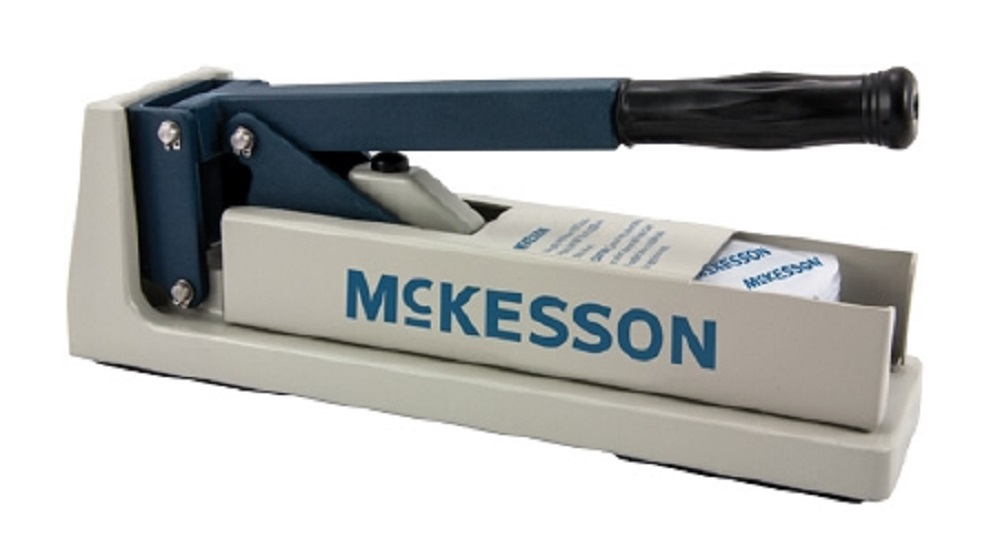
Disadvantages of Tablet Crushing
Considerations when using tablet crushing devices include:
- Some devices require dexterity and strength and may not be suitable for frail patients
- Patient compliance may be an issue for some patients
- Risk of incorrect dosing
- Potential dosage loss
- Potential patient non-compliance due to additional effort
- Pill crushers require thorough cleaning between uses to prevent possible medication cross-contamination
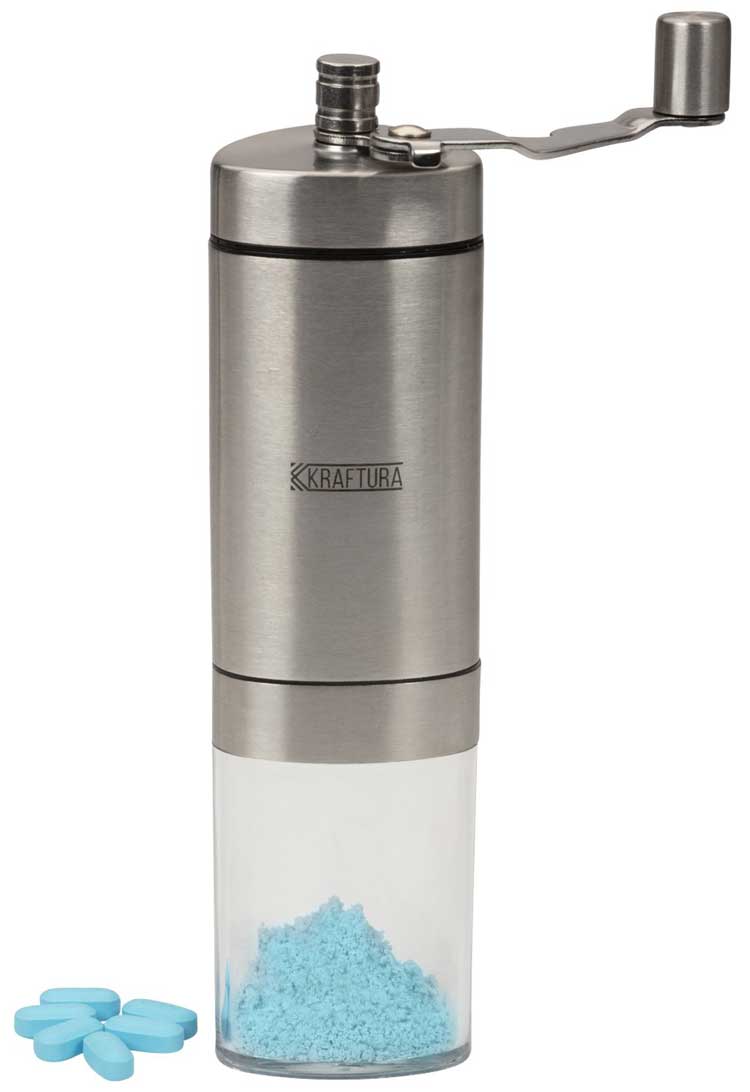
Types of Pill Crushing Devices
Types of pill-crushing devices include:
- Mortar and pestle devices: Antique two-piece systems made from stone, stainless steel, silicone, hardwood, or porcelain.
- Twist screw types: Inexpensive, popular options that allow users to employ twist knobs to crush medications.
- Scissor types: Allow users to position pills within the jaws of the scissors, dividing pills into two equal parts.
- Electric pill crushers: Crush pills with an easy-to-use press of a button.
- Crushing syringes: Optimize oral tablet consumption by crushing tablets, mixing them with liquids, and then administering liquefied medications for enteral feedings.
- Lever pill crushers: Apply lever-enabled force to crush tablets; pills are added to bags to prevent cross-contamination; bags are then inserted into slots and the lever crushes the pills.
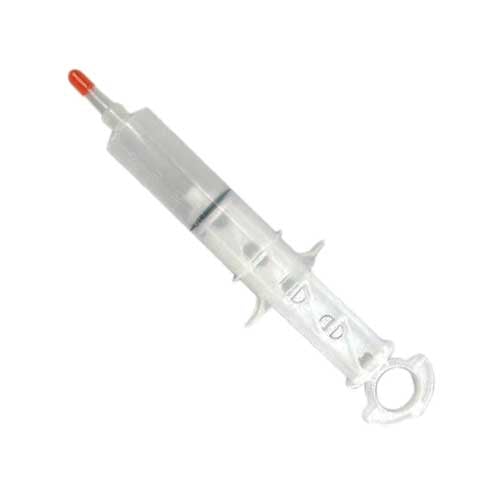
Selecting the Best Pill Crusher
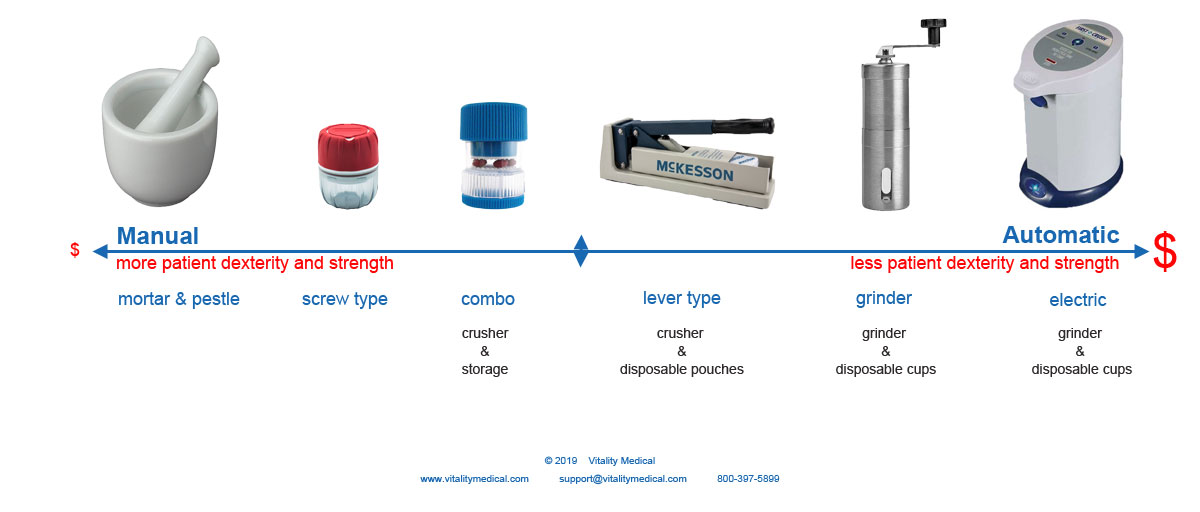
Pill crushers fall into two main groups—manual and automatic. The automatic devices use batteries or AC to power the grinder. Among the manual devices are numerous options. They include the age-old mortar & pestle to the simple screw-type, both requiring some patient dexterity and strength. Combo devices blend a tablet smasher with a cutter or with storage. Some combo devices provide a cup for mixing and administering the medication with liquid. There are also the lever and grinder types that require less dexterity and strength. The automatic devices offer ease and convenience. Frail patients should find automatic devices suitable since they do not require any strength to operate. The infographic above displays the different types of devices and how they match up with patient abilities.
Top Ten Manual Pill Crushers
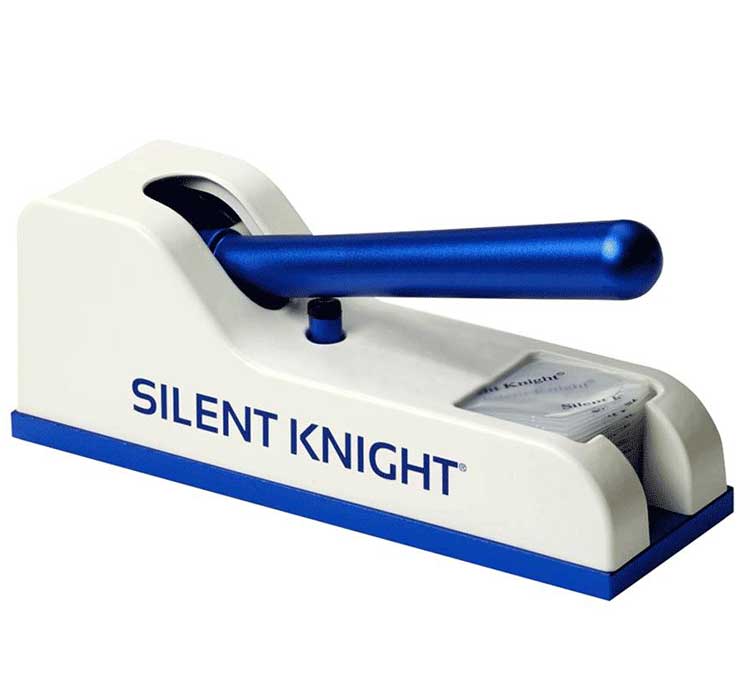
#1
- lever style device used with pouches.
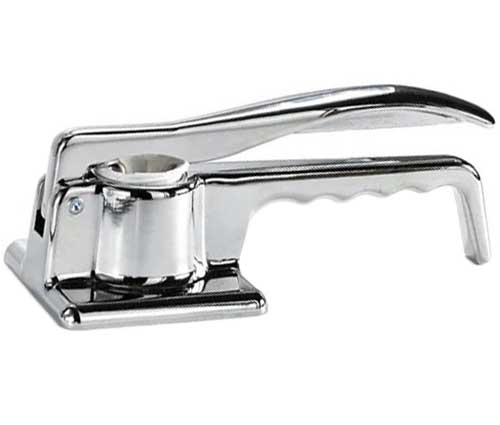
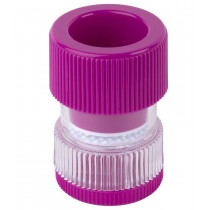
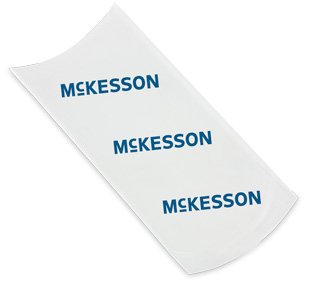
#4
Pill Crusher Pouches - designed for insertion into a lever device or you can just hammer the tablets into powder.
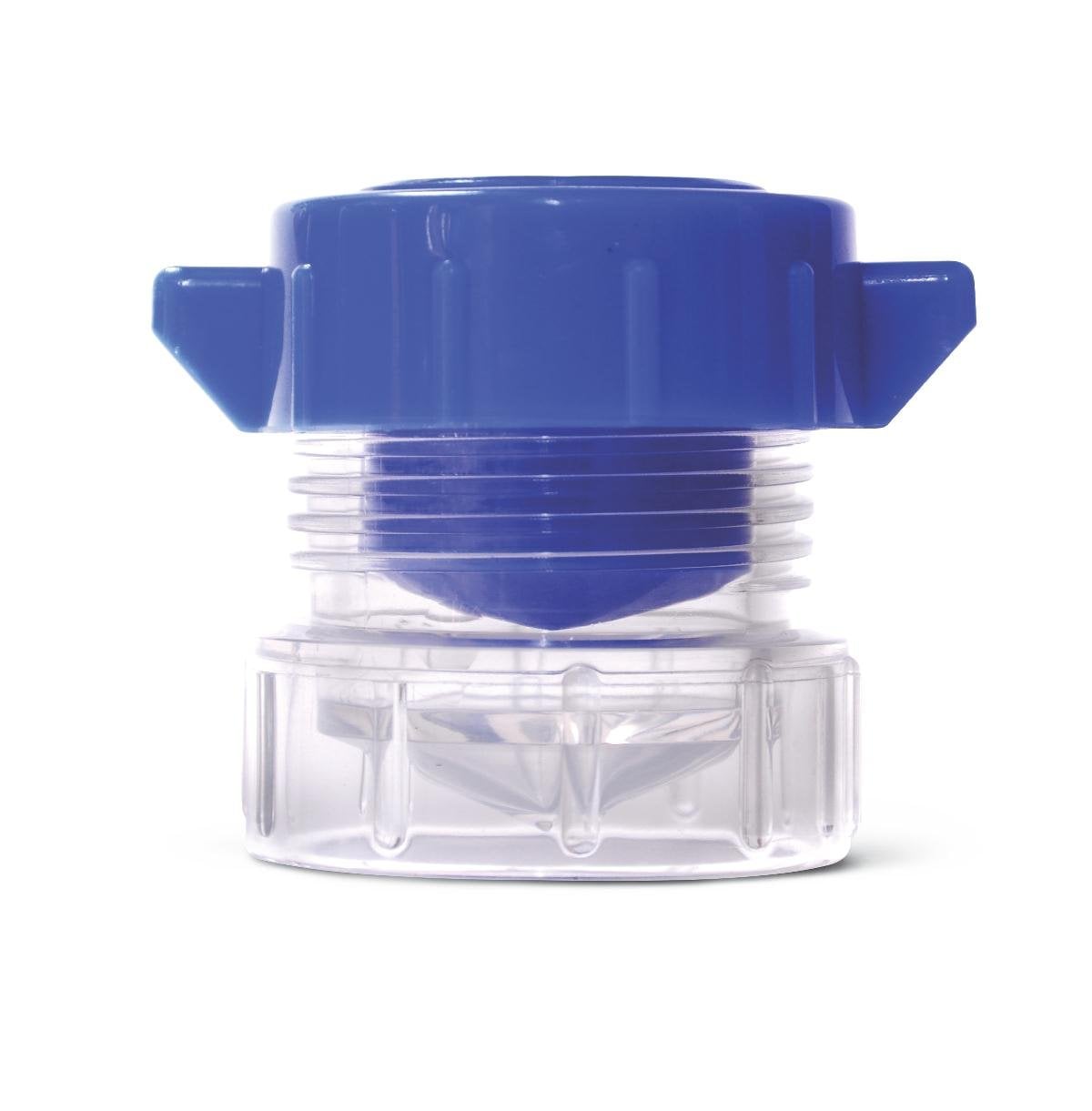
#5
Medline Pill Crusher - twist type with transparent base for observation. This device comes with storage and knobs on the side for better grip.
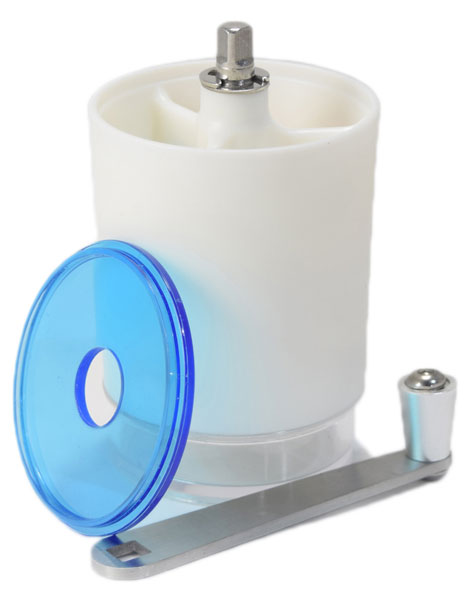
#6
HealthSmart Pill Crusher Tablet Grinder - grinder design with a handle crank. Grinds to a fine powder everytime.
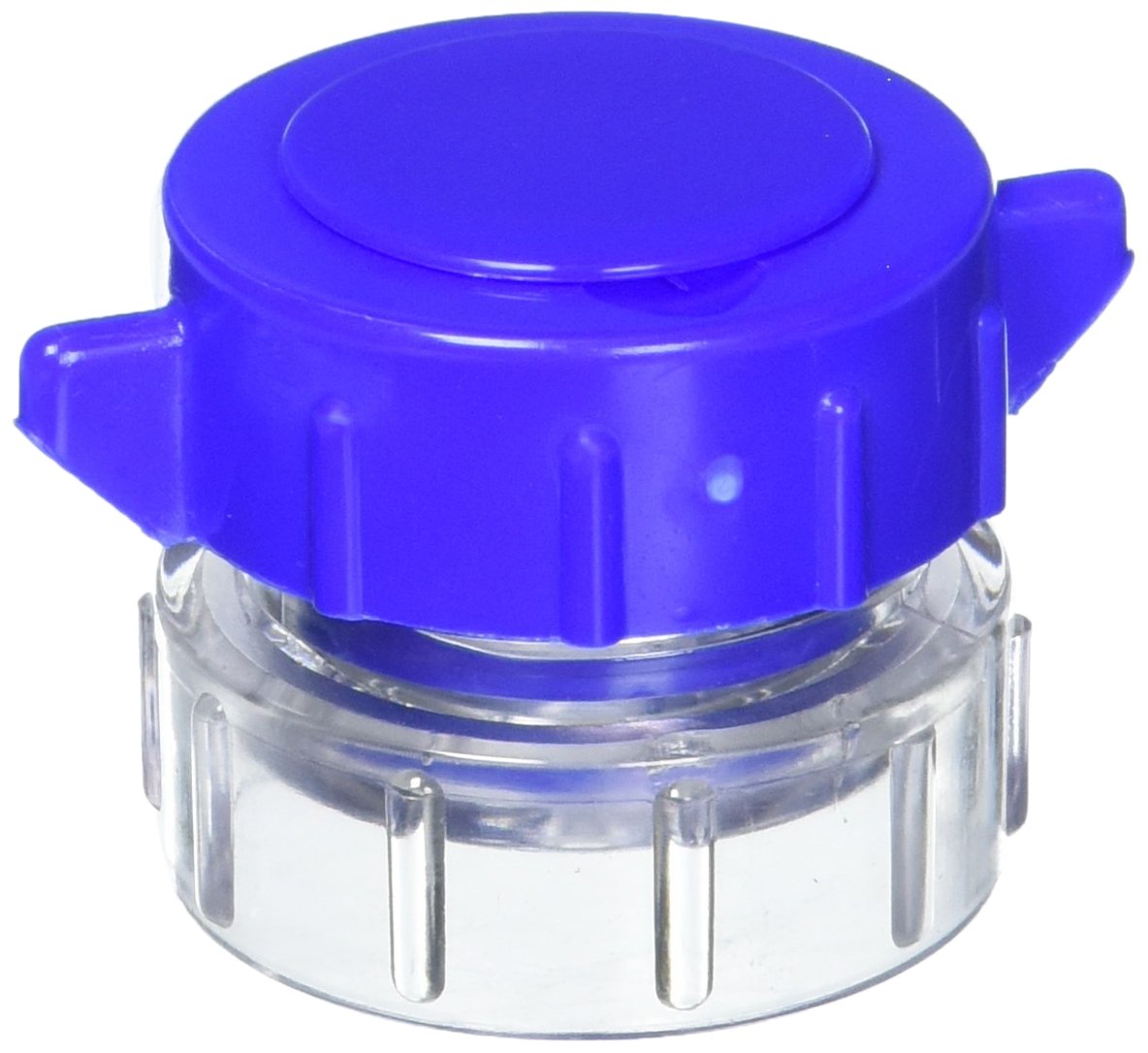
#7
Apex Pulverizer - twist type with transparent base for observation. This device comes with storage and wing grips on the cap for better grip.
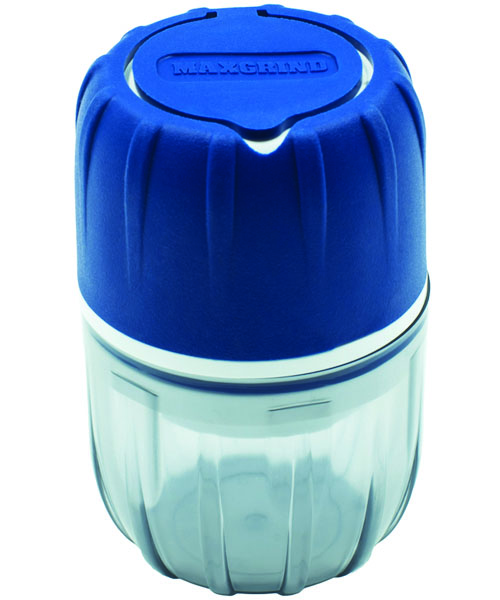
#8
MaxGrind - twist type with anti-slip rubber grip and serving cup.
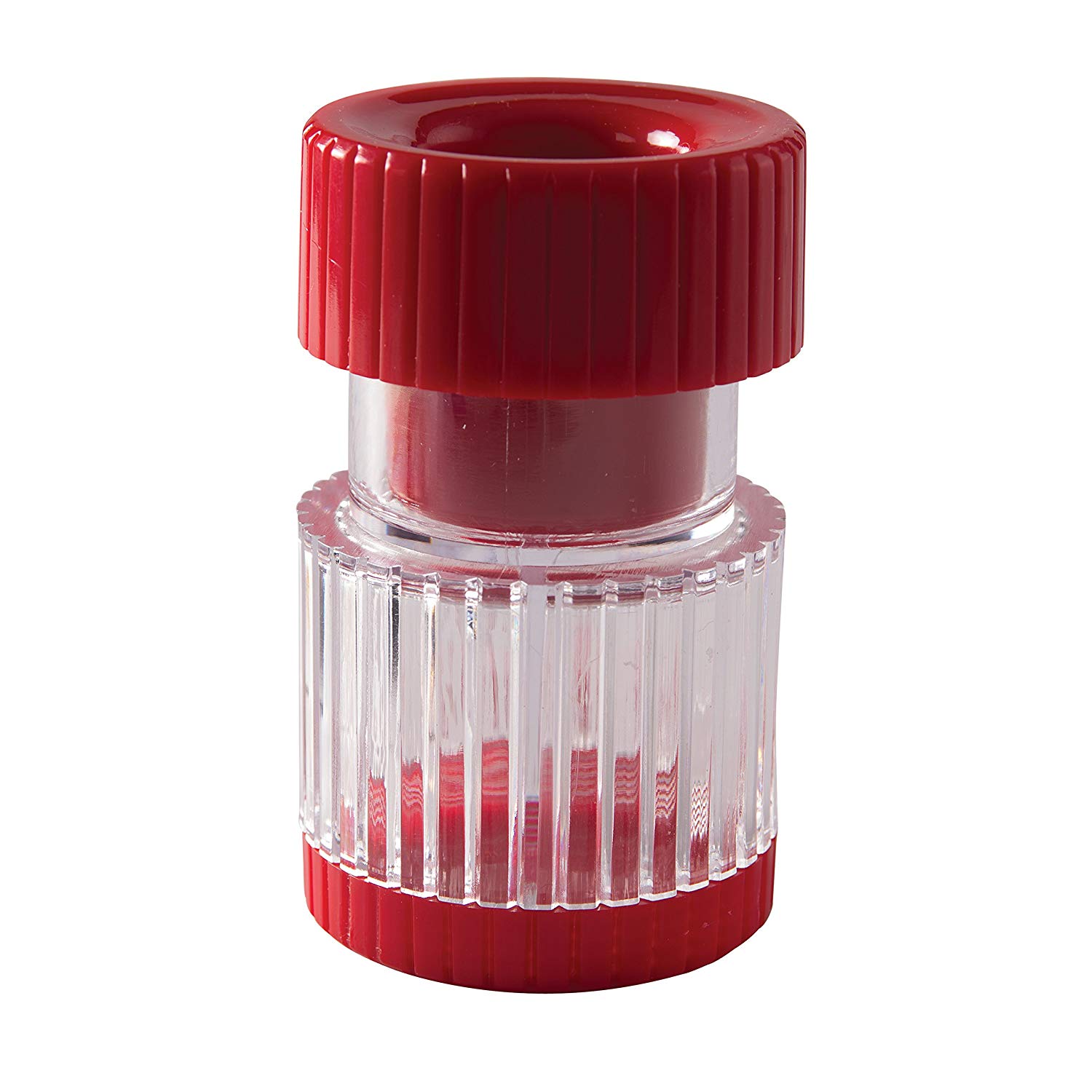
#9
HealthSmart Pill Crusher - twist type with transparent base for observation. Grip ridges located on the cap and base for better grip. This device comes with a two-compartment storage area in the cap.
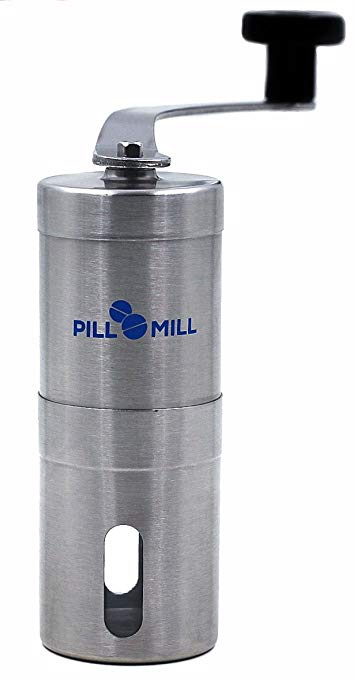
#10
Pill Mill - grinder style that is nearly effortless to use.
Top Two Automatic Pill Crushers
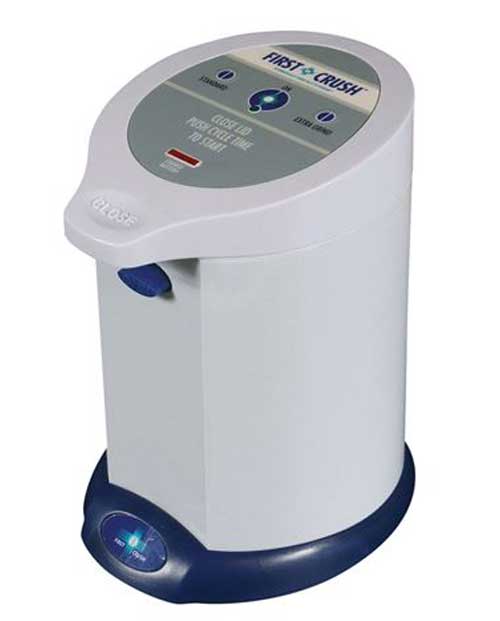
#1
First Crush Gen2 Automated - electric pill grinder that grinds tablets to powder and places it into a dosing cup.
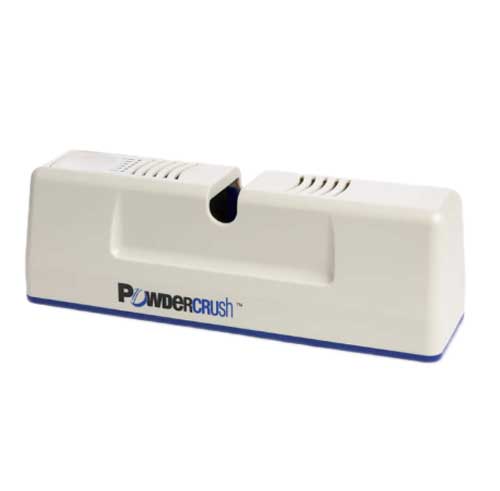
Main Tablet Cutting Units and Replacement Parts Available
Vitality Medical has many different pill tablet crushers and tablet cutters in different styles, depending on the preferences of the user. Shop here for pill-crushing or cutting units, replacement parts, and accessories, such as pouches and paper cups. For questions about tablet-cutting machines or to find the best pill crushers for a patient’s specific needs, reach out to a product specialist at Vitality Medical. Specialists are available by live chat or phone during business hours or by email any time of day.
Footnotes
- 1. Haw C, Stubbs J. Administration of medicines in food and drink: A study of older inpatients with severe mental illness. International Psychogeriatrics 2010; 22: 409.
- 2. Thong, Min Yew, Yady J. Manrique, and Kathryn J. Steadman. "Drug loss while crushing tablets: Comparison of 24 tablet crushing devices." PloS one 13.3 (2018): e0193683, 3.
- 3. Thong, p. 12.
- 4. Mitchell, John F. "Oral dosage forms that should not be crushed." Institute for Safe Medication Practices 7 (2011).
Medical Studies
-
 Haw C, Stubbs J. Administration of medicines in food and drink: A study of older inpatients with severe mental illness. International Psychogeriatrics 2010; 22: 409-416.
Haw C, Stubbs J. Administration of medicines in food and drink: A study of older inpatients with severe mental illness. International Psychogeriatrics 2010; 22: 409-416. -
 Thong, Min Yew, Yady J. Manrique, and Kathryn J. Steadman. "Drug loss while crushing tablets: Comparison of 24 tablet crushing devices." PloS one 2018 13.3: e0193683, 3.
Thong, Min Yew, Yady J. Manrique, and Kathryn J. Steadman. "Drug loss while crushing tablets: Comparison of 24 tablet crushing devices." PloS one 2018 13.3: e0193683, 3. -
 Mitchell, John F. "Oral dosage forms that should not be crushed." Institute for Safe Medication Practices 7 (2011).
Mitchell, John F. "Oral dosage forms that should not be crushed." Institute for Safe Medication Practices 7 (2011). -
 Salmon, Damien, et al. "Pharmaceutical and safety considerations of tablet crushing in patients undergoing enteral intubation." International journal of pharmaceutics443.1-2 (2013): 146-153.
Salmon, Damien, et al. "Pharmaceutical and safety considerations of tablet crushing in patients undergoing enteral intubation." International journal of pharmaceutics443.1-2 (2013): 146-153. -
 Grimminck, Angela. "A review of devices that improve patient compliance." Canadian Pharmacists Journal 131.3 (1998): 41.
Grimminck, Angela. "A review of devices that improve patient compliance." Canadian Pharmacists Journal 131.3 (1998): 41. -
 Paradiso LM, Roughead EE, Gilbert AL et al. Crushing or altering medications: What's happening in residential aged‐care facilities? Australasian Journal of Ageing 2002; 21: 123-127.
Paradiso LM, Roughead EE, Gilbert AL et al. Crushing or altering medications: What's happening in residential aged‐care facilities? Australasian Journal of Ageing 2002; 21: 123-127. -
 Barnes L, Cheek J, Nation RL, Gilbert A, Paradiso L, Ballantyne A. Making sure the residents get their tablets: Medication administration in care homes for older people. Journal of Advanced Nursing 2006; 56: 190-199.
Barnes L, Cheek J, Nation RL, Gilbert A, Paradiso L, Ballantyne A. Making sure the residents get their tablets: Medication administration in care homes for older people. Journal of Advanced Nursing 2006; 56: 190-199.

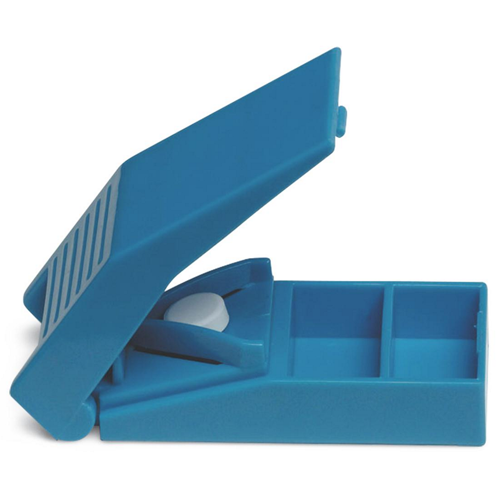
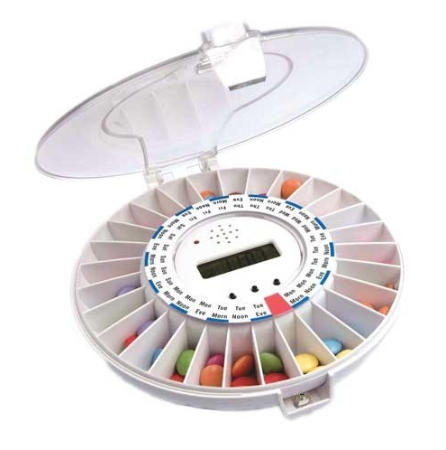
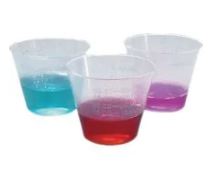
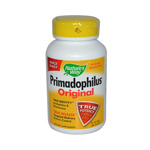
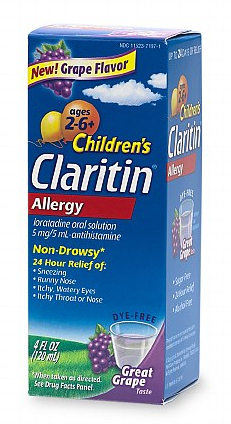
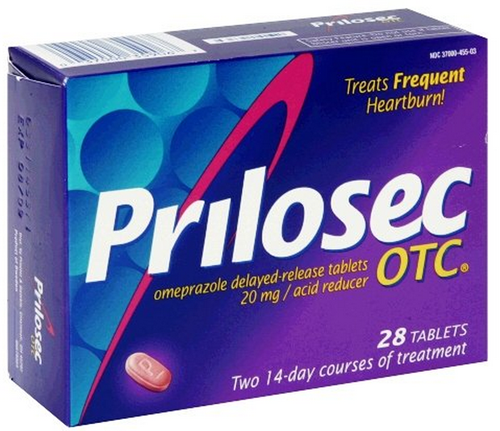
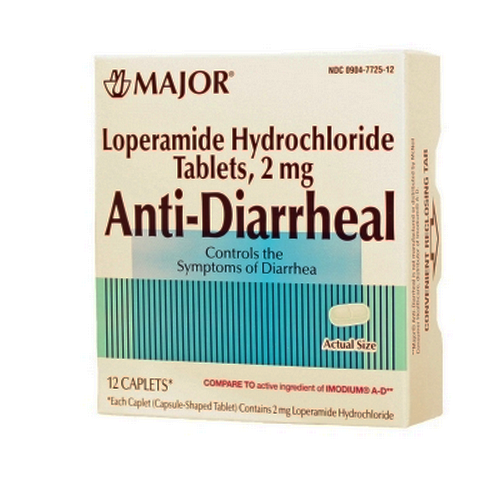
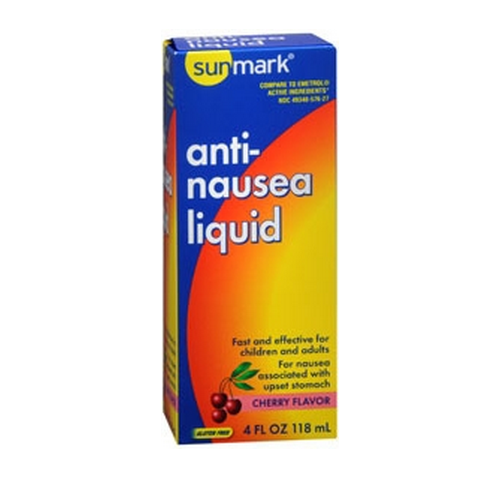
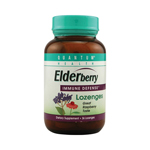
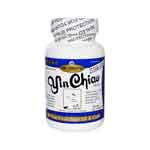
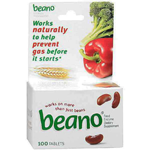
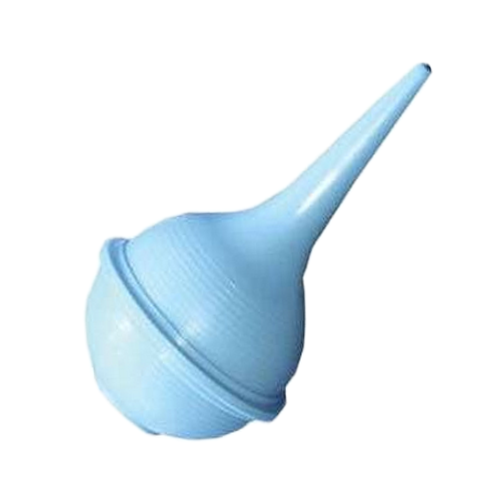
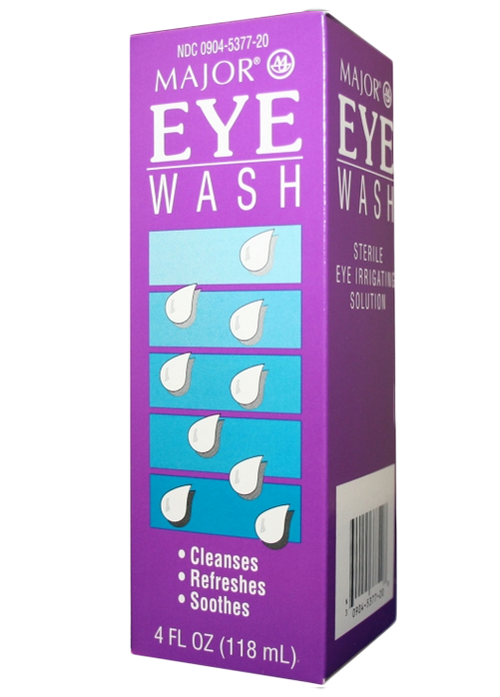
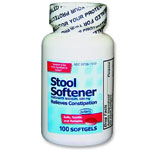
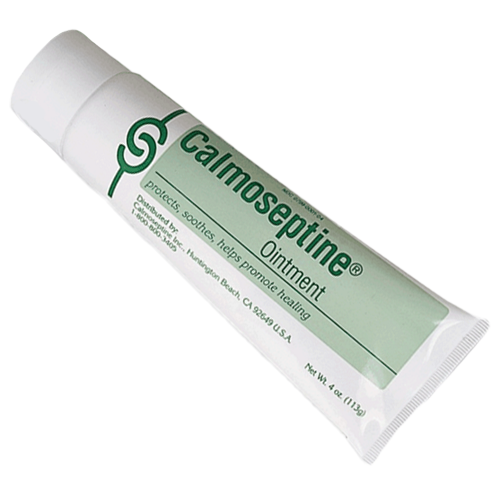
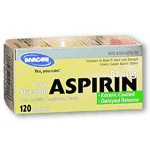
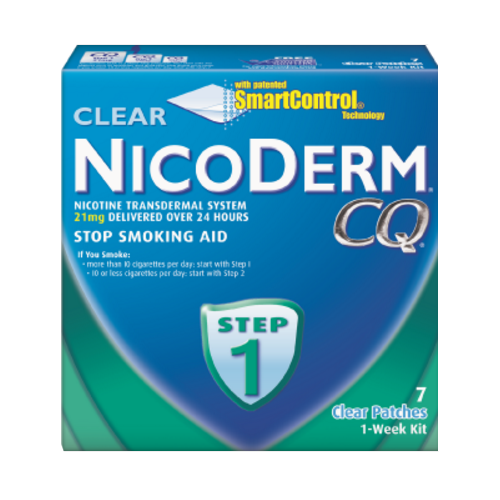
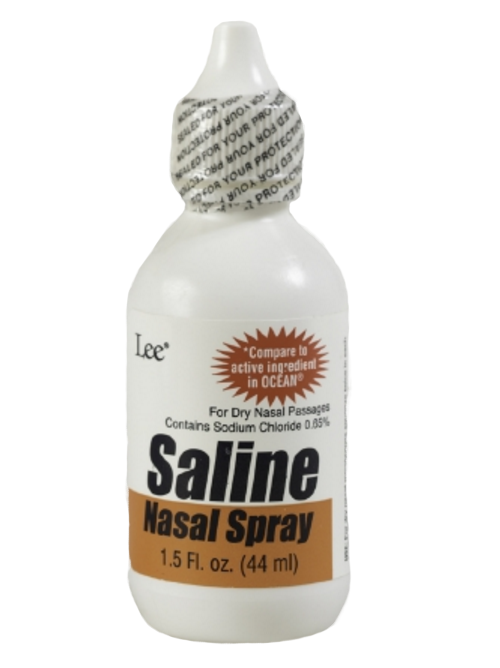
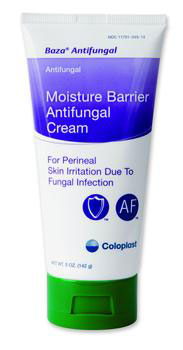
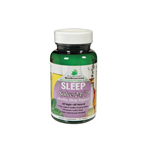
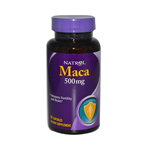

Login and Registration Form